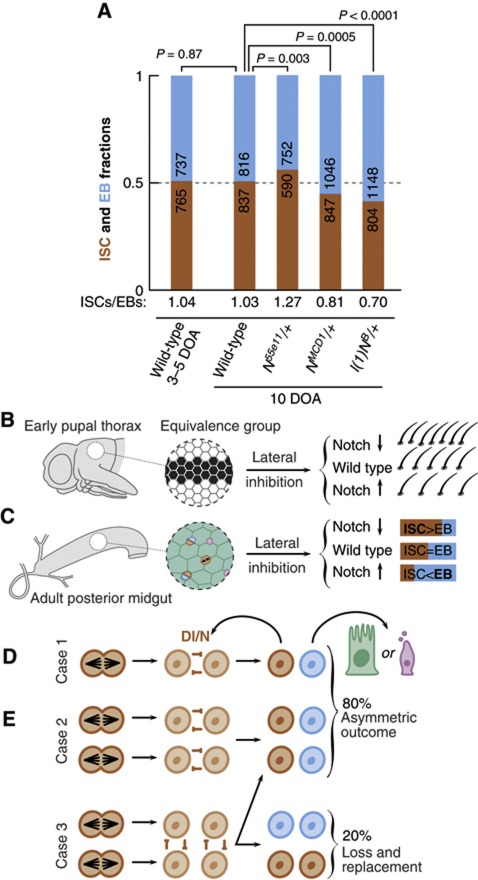Figure 8.
Population asymmetry in the midgut through lateral inhibition. (A) ISC/EB ratios in the different genetic backgrounds. Wild type presents a balanced proportion both at 3–5 DOA and at 10 DOA. Hypomorphic conditions for N (N55e11/+) show excess ISCs, while hyperactive conditions (l(1)NB/+ and NMCD1/+) show increased number of EBs. (B) Lateral inhibition during the development of adult PNS restricts the number of sensory bristles arising in the dorsal thorax from a group of equivalence (black cells). Hypomorphic alleles of N lead to neurogenic phenotype (excess sensory bristles) whereas hyperactive N allelic combinations lead to antineurogenic phenotype (less bristles, in favour of epidermal fate). (C) Parallel phenomenology during the fate allocation of ISC offspring: ‘neurogenic conditions’ for N lead to excess of ISCs, whereas ‘antineurogenic conditions’ for N lead to less ISCs, in favour of EB fate. (D) During tissue maintenance, loss of mature cells is compensated by the differentiation of an EB cell combined with the division of an ISC. When an isolated ISC divides, competition can only occur between the siblings (case 1), leading to asymmetrical fate outcome. (E) If division occurs in two neighbouring ISCs, then there are two possible fate outcomes. If the competition to remain a stem cell occurs between sibling cells (case 2), then only one cell in each pair of daughter cells may differentiate leading to asymmetric fate outcome. However, if competition occurs between proximate non-sibling cells (case 3), then the fate outcome can result in either asymmetrical or symmetrical fate, the latter leading to ISC loss and replacement. From the results of the clonal analysis, we would predict that 2 out of 10 ISC divisions result in ISC loss and replacement.

